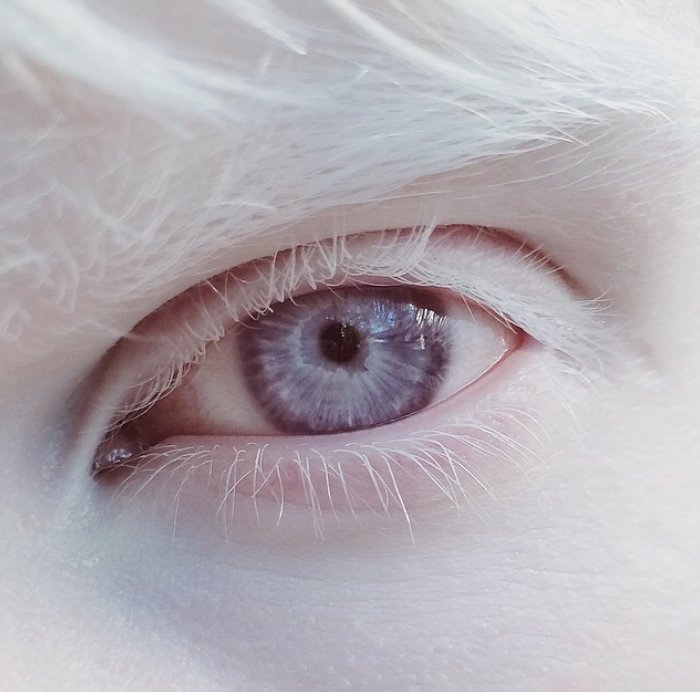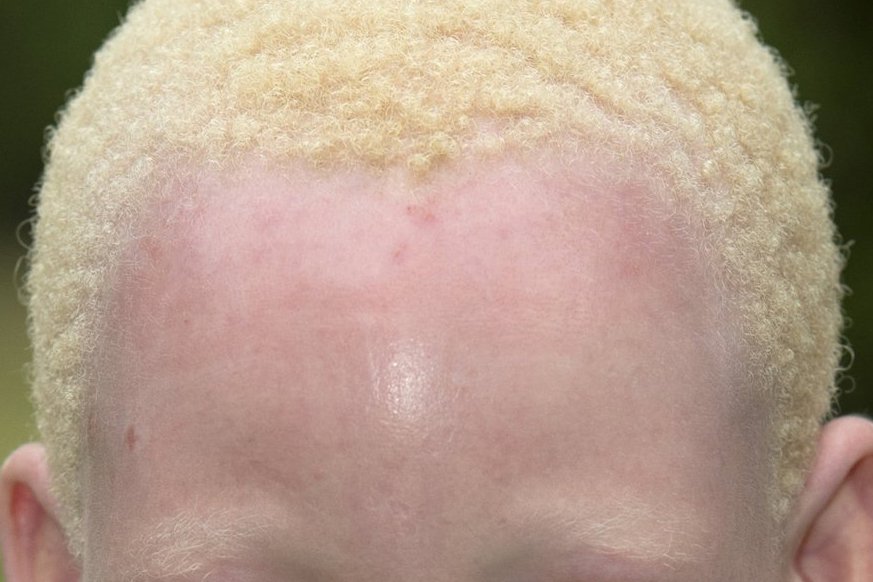

Albinism is an inherited genetic condition that reduces the amount of melanin pigment formed in the skin, hair and/or eyes. Albinism occurs in all racial and ethnic groups throughout the world. In the U.S., approximately one in 18,000 to 20,000 people has some type of albinism. In other parts of the world, the occurrence can be as high as one in 3,000. Most children with albinism are born to parents who have normal hair and eye color for their ethnic backgrounds.
In other words, albinism is a congenital disorder that results in a lack of pigmentation (known as melanin)that gives colour to hair, skin and eyes. Other conditions associated with albinism include vulnerability to bright light, which can cause legal blindness. Because their skin is particularly vulnerable to the sun's ultraviolet rays, people with albinism can also be predisposed to skin cancer and lesions. According to a 2014 study, people with albinism in Africa are 1,000 times more likely to get skin cancer than others.
Albinism is caused by a recessive gene, meaning both parents must carry the gene for it to be passed on. The parents themselves do not need to exhibit albinism. Many children with albinism have blue or brown eyes. Sometimes, the eyes might appear pink or reddish, and that is a result of the iris having very little colour. Albinism is a lifelong condition and does not cause intellectual disabilities. Children with albinism usually have normal intelligence but their poor health and poor vision can often result in persons with albinism abandoning schooling. People with albinism are considered legally blind because their photoreceptors (or cells in the retina that detect light) are unable to adequately conveght into clear signals to the brain. As a result, persons with albinism have a condition called nystagmus. This is when the eyes continuously flutter. They may also have problems with reduced depth perception and with tracking an object with their eyes.

It often appears pale white, cream, or pink. But people with the ocular, or eye, form of albinism may have skin that’s brown or otherwise similar to their relatives’ color. Some children born with albinism may start or speed up production of melanin as they grow into their teens. So they may turn a bit darker. People with albinism can burn easily in the sun and are more likely to get skin cancer, some as early as in their teens.
Blue eyes are most common in people with albinism. But sometimes their iris, the colored part of the eye, can lack so much pigment that they appear pink or reddish from the blood vessels. Melanin is critical for the growth of optic nerves that let you focus on images like printed words and faces. Even with glasses or contacts, the problem can’t be corrected to normal vision. Signs of albinism may not be easily visible in everyone. So issues with your eye or eyesight may be the first clue that you may have the condition.
Other symptoms include if your eyes:
Your vision likely will be worse the less color you have in your eyes. On the other hand, your eyesight should stay stable over time, and you’ll see colors normally. Some people with albinism may see well enough to be able to drive with restrictions, such as only during the day or in specific areas.
Your hair, eyelashes, and eyebrows could range from very white, yellow, or even reddish. As you get older, your hair may darken to blond or even light brown.

|

|
These disorders are generally divided into two types. Oculocutaneous (pronounced Ock-you-low-kew-TAIN-ee-us) Albinism (OCA) and Ocular Albinism (OA). OCA involves decreased pigment in the eyes, hair, and skin. There are 4 types of OCA that have been described depending on the type of genetic defect. OA involves primarily the eyes, while the skin and hair show normal or near-normal coloration.
Some individuals with oculocutaneous albinism have extremely pale hair, eyes and white hair, whereas others with the same form of albinism may have more colors in their hair, eyes or skins.
However, only eyes are affected in ocular albinism. These people with albinism generally have blue eyes. In some cases, iris (colored part of the eye) has very few color, therefore, such eyes may look pink or reddish. The reason is the blood vessels inside the eye. In some ocular albinism forms, acoustic nerves may also be affected, leading to hearing impairment or deafness over time.

|

|
Vision Considerations
People with albinism have vision problems that are not correctable with eyeglasses, and many have low vision. It’s the abnormal development of the retina and abnormal patterns of nerve connections between the eye and the brain that cause vision problems. The presence of these eye problems defines the diagnosis of albinism. The degree of impairment varies with the different types of albinism. Although people with albinism may be considered “legally blind” with a corrected visual acuity of 20/200 or worse, most learn to use their vision in a variety of ways and are able to perform innumerable activities such as reading, riding a bike or fishing. Some have sufficient vision to drive a car.
Dermatological Considerations
Because most people with albinism have fair complexions, it’s important to avoid sun damage to the skin and eyes by taking precautions such as wearing sunscreen or sunblock, hats, sunglasses and sun-protective clothing.
Albinism is a lifelong condition that does not worsen with time. Although there is no way to treat poor or absent pigment production or correct abnormal vision development, proper eye evaluation and management are essential. Glasses can be prescribed to improve vision and reduce light sensitivity. Magnifying glasses for reading and low vision aids for distance vision can also be helpful. Eye misalignment can be treated with glasses or surgery. Abnormal head postures and nystagmus can be improved with surgery. Genetic counseling of affected individuals and their families is recommended. Counselors can provide a detailed explanation of the disorder including the chances of future children being affected.